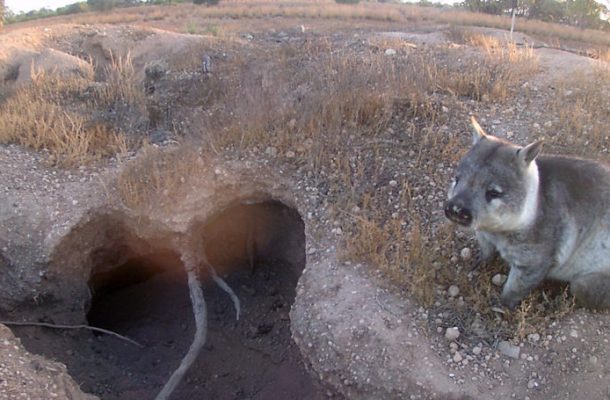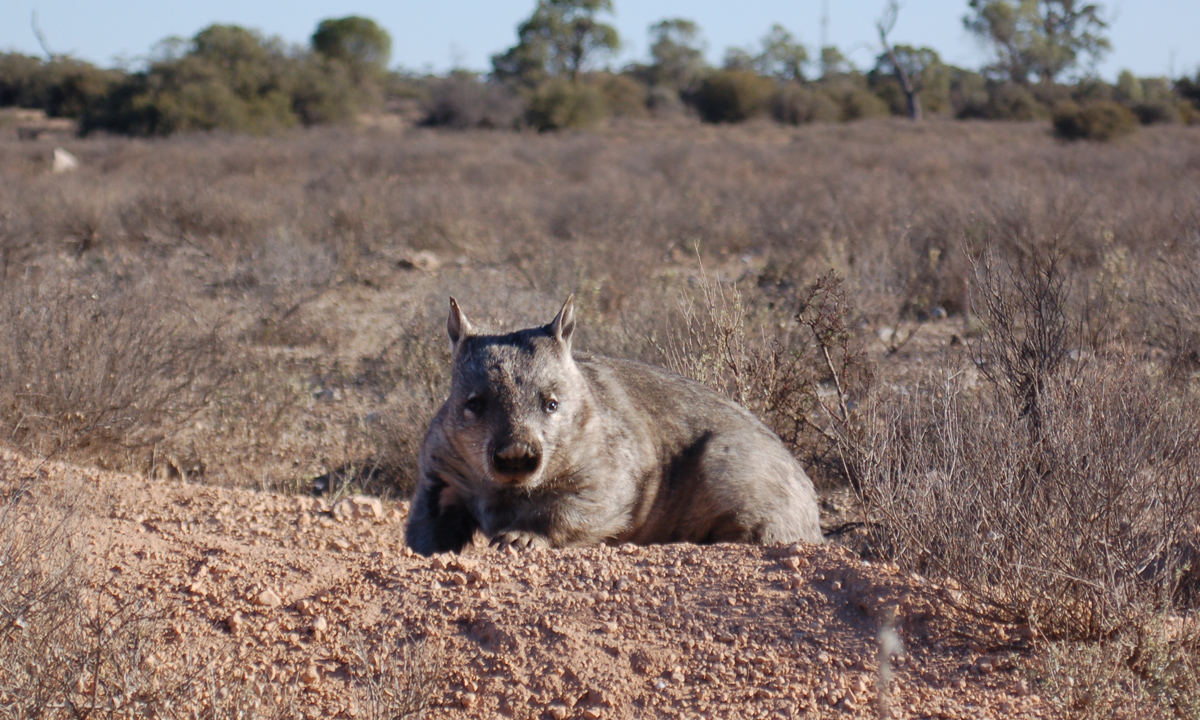Unearthing the secret life of wombats

The most significant wombat conference in 20 years will bring experts from around the world to South Australia.
The three-day conference at the University of Adelaide Wombats Through Time and Space coincides with the 20th anniversary of the release of a book that has become known among researchers as the Wombat bible.
Conference convener Mike Swinbourne from the University of Adelaide’s School of Biological Sciences said a great deal of additional research into the nocturnal marsupials had been compiled since 1998.
“I suggested we should update the book so I was given the job of organising another conference,” the PhD candidate said.
There are three species of wombats: the Southern Hairy-Nosed, Common and Northern Hairy-Nosed Wombat.
Swinbourne said all three species had undergone significant changes in the past 20 years. He said advances in technology such as high-resolution satellite imagery and motion-activated cameras had also played a significant role in advancing wombat research.
“The Northern Hairy-Nosed Wombat, 20 years ago there were only 35 of them left and there’s been quite an intense recovery program and now numbers are up to about 240.”
“An outbreak of mange in Common Wombats has got much worse in recent years while the effective control of rabbits has led to steady growth in the population of the Southern Hairy-Nosed Wombat and that’s having an impact on the agricultural sector,” he said.
Wombats and koalas share a common ancestor called the Diprotodon – the largest known marsupial – that was larger than a cow and roamed Australia approximately 1.6 million and 45,000 years ago. The modern wombat is similar in stature to a solidly built medium-sized dog and has cubed-shaped droppings.
Although wombats only live in the wild in Australia, the curious marsupials can be found at more than 90 zoos around the world where they are perennial favourites.
“If you’ve ever been up and close with a wombat it’s one of those animals that you fall in love with – they’ve got great personalities, they’re friendly and playful, they roll on their back so you can scratch their belly and they’re almost like a dog,” Swinbourne said
“Conversely there’s the farming community who don’t necessarily like them very much so there’s such a diverse range of opinions about them.”
Southern Hairy-Nosed wombats are found in South Australia and parts of Western Australia while Common Wombats live mainly in Victoria, New South Wales, Tasmania and the southeast of South Australia. The endangered Northern Hairy-Nosed Wombat is only found in small pockets of Queensland.
South Australia is home to 90 per cent of Southern Hairy-Nosed Wombats, which Swinbourne predicts have reached their highest numbers since the introduction of destructive European rabbits to Australia in the late 19th Century.

The South Australian capital Adelaide will host the September 17-19 conference, which will feature more than 60 delegates and 35 speakers ranging from researchers, zookeepers, wombat carers and farmers.
Swinbourne said international speakers included a metabarcoding expert from Arizona, a wombat lover from Washington DC who checks on the marsupials at zoos around the world and a researcher from the University of Edinburgh in Scotland who has helped map the genome of the Common Wombat.
Wombats live underground often in remote areas and are most active at night, making them difficult to research in the wild.
“Wombats have been here almost forever but no one really started to study them in depth until the 1970s,” he said.
“There’s still a great deal we need to learn but we’ve really started to ramp up the research recently because we now have these tools we didn’t have in the past.”
Open Forum is a policy discussion website produced by Global Access Partners – Australia’s Institute for Active Policy. We welcome contributions and invite you to submit a blog to the editor and follow us on Facebook, Linkedin and Mastadon.














